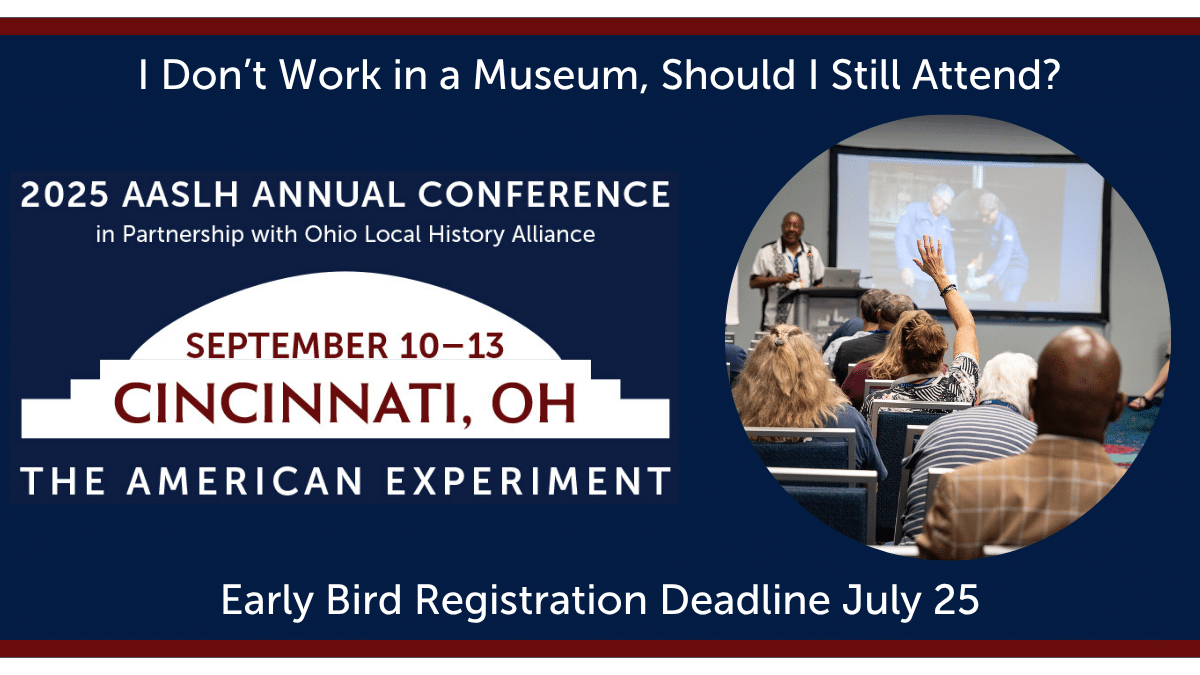
By AASLH Standards and Ethics Committee
The AASLH Standards and Ethics Committee has compiled FAQs to help explain the new Valuing History Collections position paper. Approved by the AASLH Council in May 2020, the new position paper was introduced in the recent webinar AASLH Conversations: Deaccessioning in a Recession? Why and Why Not.
How can I use this position paper to help manage our institution’s collections?
The information in this paper can inform and reinforce core documents within your institution, specifically your collections management policy and code of ethics statement. These core documents emphasize the rights and responsibilities of maintaining a collection. Valuing History Collections provides guidance on how to designate funds from deaccessions while maintaining compliance with accounting and reporting standards.
How can I use this position paper with leadership and with my board?
This paper can be used as an educational tool to share with your board and leadership. It outlines why collections should not be considered financial assets. Doing so can undermine the mission of the institution, compromise the trust earned from your community, endanger accreditation of the institution, and misrepresent your institution’s financial standing with auditors and the Financial Accounting Standards Board (FASB).
If my institution doesn’t capitalize its collections, won’t that affect how others perceive its financial health?
No, because collections are not financial assets, but rather resources that reinforce the museum’s mission. Though collections can be deaccessioned and sold, the funds realized from deaccessioning are not to be used for budgetary shortfalls, but for new collections acquisitions or for direct care of the institution’s existing collections.

How does this position paper fit with AAMD’s recent position regarding money from deaccessions?
The Association of Art Museum Directors announced a series of resolutions that place a moratorium on punitive actions through April 10, 2022, for art museums that decide to use restricted endowment funds, trusts, or donations for general operating expenses. For the next two years, AAMD will also allow its member museums to use funds realized from the sale of deaccessioned objects either for the acquisition of new items for their collections or for the direct care of the remaining collections objects. This aligns with AASLH’s pre-existing policies.
Can I assign a value to my collection for insurance or loan purposes?
Yes, you can. A small history organization, for example, might purchase a blanket fine arts policy with a maximum limit, like $1 million or some other round figure. The insurance company may require an annual list of the organization’s top ten items with their values. Those values can be estimated although it is a good idea to place documentation about the source of those estimates in the collection files (for example, documentation might be a trade newspaper article about a similar item that recently sold for that amount). Your organization’s blanket limit should be based on what you think your maximum probable loss would total combined with how much you can budget annually for the cost of the insurance policy.
Having accurate values for collection items is especially important when they are being loaned to another museum for an exhibition or other purpose. The borrower will need an accurate value from the lender in order to provide proof of insurance coverage (typically paid by the borrower) for the length of the loan.
In conclusion, although monetary values can be assigned to collections, they should not be considered financial assets of the institution. Moreover, they should not be used as collateral for monetary loans a museum might receive from a bank or other source.
What other resources can I consult for guidance on managing my organization’s collections?
- Managing Previously Unmanaged Collections: A Practical Guide for Museums
- Things Great and Small: Collections Management Policies, second edition
- A Legal Primer on Managing Museum Collections, third edition
- Direct Care of Collections: Ethics, Guidelines and Recommendations
- ARCS Museum Property Acts and Abandoned Loan Legislation
- AAM Deaccession Toolbox (including the Deaccession Toolkit Resource List and the Collections Sustainability Rubric)
- Museum Registration Methods, sixth edition
- AASLH Statement of Standards and Ethics
- AAM Code of Ethics for Museums



